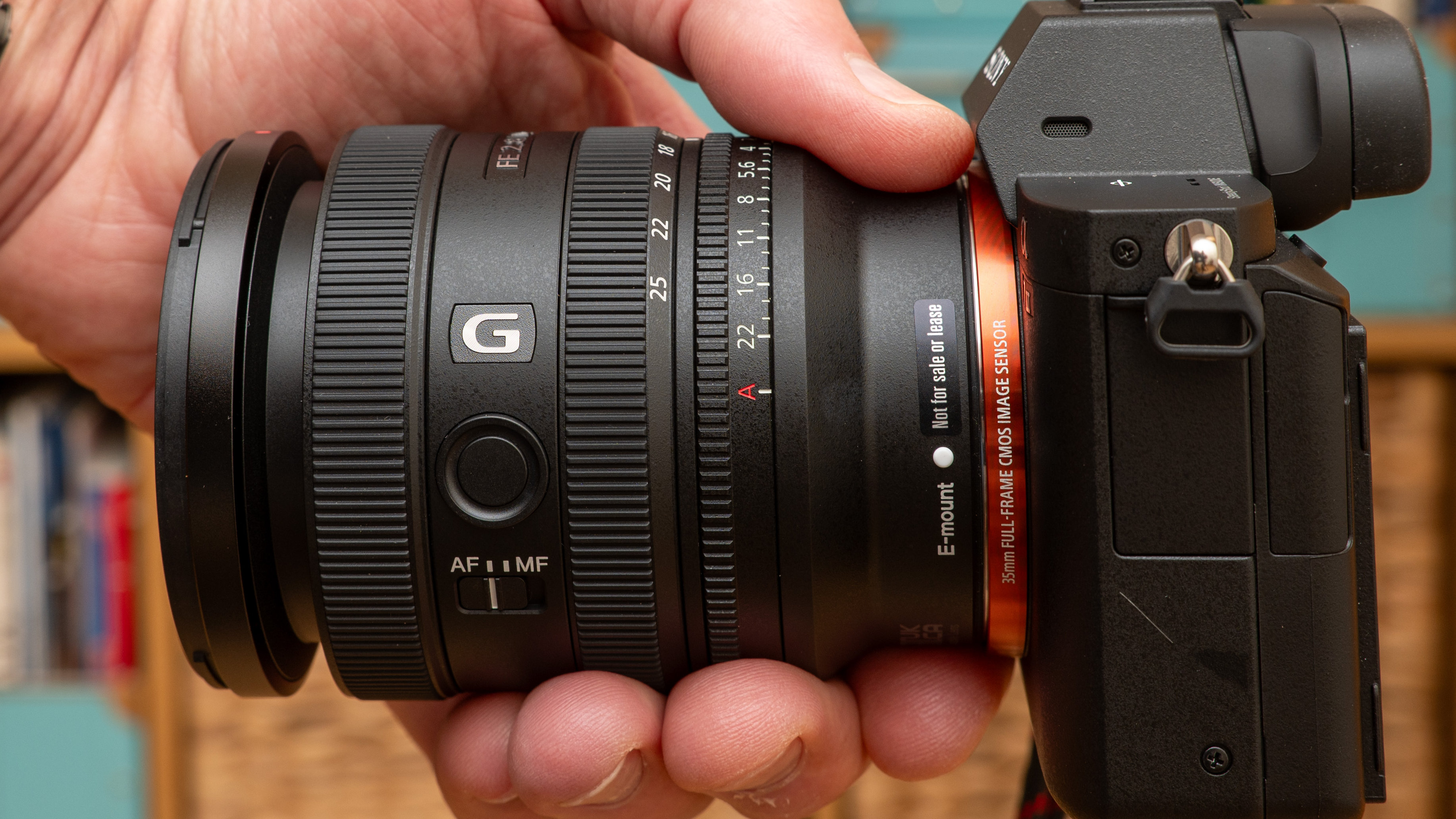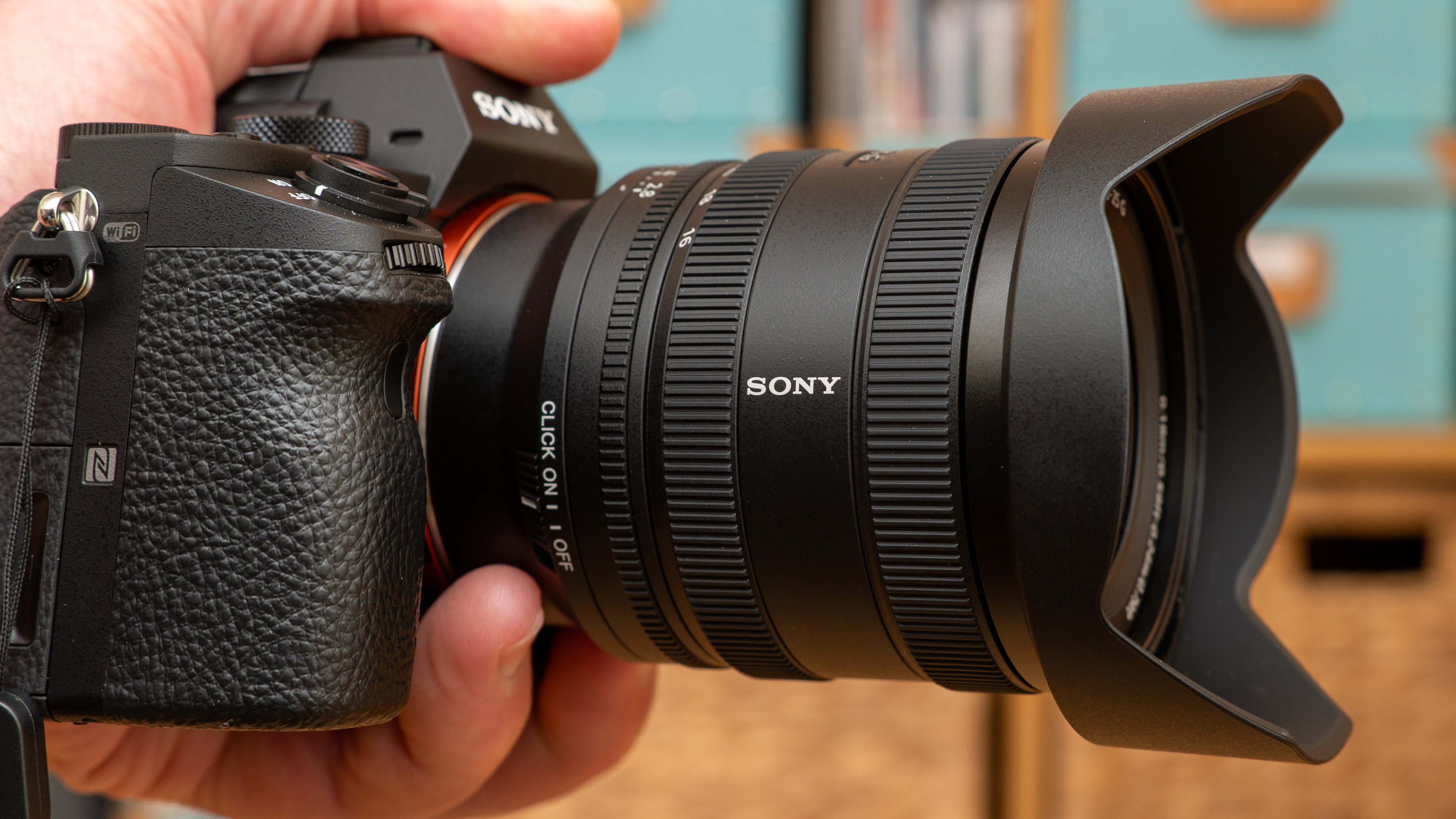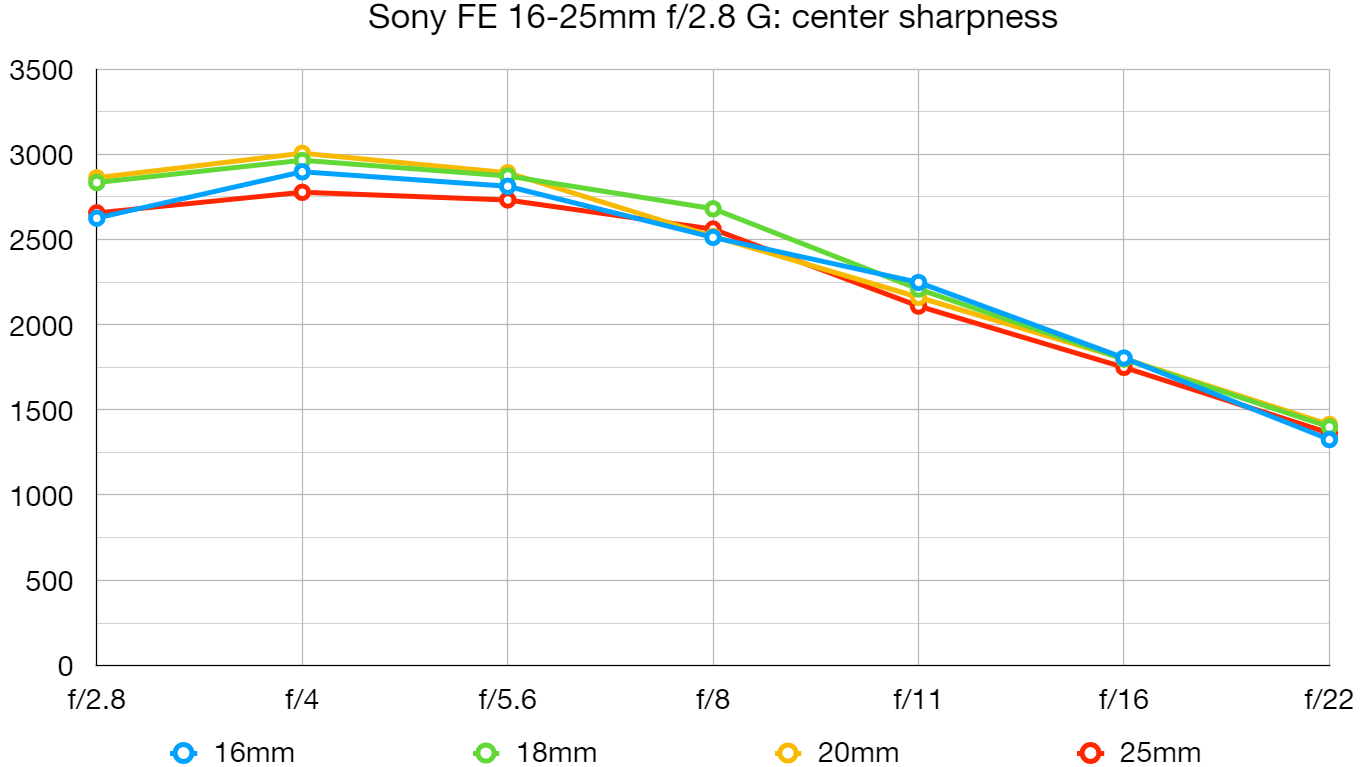Digital Camera World Verdict
Bigger isn’t always better and, for me, a key selling point of the Sony FE 16-25mm f/2.8 G is that it’s remarkably small and lightweight for a full-frame compatible wide-angle zoom with a constant f/2.8 aperture rating. There are plenty of handling extras packed into this diminutive lens, making it a highly attractive proposition, but it doesn’t come cheap.
Pros
- +
Impressive image quality
- +
Small for an f/2.8 wide-angle zoom
- +
Neat handling characteristics
Cons
- -
Small zoom range
- -
Needs correction for distortion
- -
Quite pricey
Why you can trust Digital Camera World
Everybody loves ‘trinity’ wide-angle, standard and telephoto f/2.8 zoom lenses, right? Actually, you can count me out. Especially for mirrorless cameras, I tend to prefer ‘slower’ f/4 zooms that are smaller and more lightweight, and feel a better balance for relatively slimline bodies, and I switch to a prime lens when I feel the need for speed.
Following in the footsteps of the Sony FE 24-50mm f/2.8 G standard zoom, the 16-25mm redresses the balance, giving a fairly fast f/2.8 aperture throughout its zoom range, but with a comparatively small and light build. Something has to give, naturally, and the zoom range itself is more restrictive than usual in both lenses. Even so, both zooms aim to take up residence in the line-up of best Sony lenses on the market, and have a lot to offer owners of the best Sony cameras in the full-frame camp.
Sony FE 16-25mm f/2.8 G: What's changed?
One of the most attractive wide-angle zooms in Sony’s arsenal is the mighty Sony FE 16-35mm f/2.8 G Master II. This ‘G’ (Gold) 16-25mm lens doesn’t have such lofty ‘G Master’ aspirations but is significantly smaller, lighter and less expensive to buy. As an indicator, the front filter attachment thread of the FE 16-25mm is just 67mm in size, compared with the 92mm of its bigger sibling.
Sony FE 16-25mm F2.8 G: Specifications
| Mount options | Sony E (FE) |
| Lens construction | 16 elements in 13 groups |
| Angle of view | 107-82 degrees |
| Diaphragm blades | 11 |
| Minimum aperture | f/22 |
| Minimum focus distance | 0.18mm (0.17m MF) |
| Maximum magnification | 0.2x (0.23x MF) |
| Filter size | 67mm |
| Dimensions | 75x91mm |
| Weight | 409g |
Sony FE 16-25mm f/2.8 G: Price & Availability
Launched in April 2024, the FE 16-25mm followed a few weeks down the line from the FE 24-50mm, both lenses being developed simultaneously, and having the same design ethos. With a recommended retail price of around £1,249/$1,198/AU$2,199, it’s about £100/$100/AU$200 more expensive than the 24-50mm standard zoom, but little more than half the price of the relatively chunky, top-flight Sony FE 16-35mm f/2.8 G Master II, which comes in at £2,299/£2,298/AU$3,399.
Sony FE 16-25mm f/2.8 G: Design & Handling
Size matters. If I’m walking around town in search of cityscapes, or trekking into the hills in pursuit of landscape photo opportunities, I don’t want to be lugging big heavy lenses around just for the sake of it. Measuring just 75x91mm and weighing in at a mere 409g, the FE 16-25mm is remarkably small and light for a constant f/2.8 aperture wide-angle zoom. It’s actually an identical width and just a single millimeter longer than the FE 24-50mm zoom, while undercutting it for weight by 31g. Both lenses have the same 67mm filter thread.
Although small, the lens feels well built and features extensive weather-seals, as well as a metal rather than plastic mounting plate, the latter often cropping up on ‘lightweight’ lenses. A fluorine coating is applied to the front element, to repel moisture and grease. Overall, the lens feels tough and durable. There’s quality glass in the optical line-up, including three aspherical elements, three ED (Extra-low Dispersion) elements and an additional aspherical ED element. The aim is to optimize sharpness, clarity and contrast while minimizing unwanted aberrations.
The best camera deals, reviews, product advice, and unmissable photography news, direct to your inbox!
Like in the companion FE 24-50mm zoom, handling exotica includes an aperture control ring that operates in one-third f/stop click steps and comes complete with a click / de-click switch, making it ideal for shooting video as well as stills. The linear stepping motor autofocus system is typically quick and virtually silent, with the usual electronically coupled focus ring.
The short minimum focus distance of 0.18m shrinks to 0.17m if you switch from AF to MF focus mode, for which a switch is positioned on the left side of the barrel. Just above this is an AF-hold button, which you can customize for alternative functions via in-camera menus. Only the middle group of element is shifted during focusing, so the lens retains the same physical length at any focus setting, although an inner barrel does extend slightly as you zoom out from 25mm to 16mm throughout the overall range.
Sony FE 16-25mm F2.8 G: Photo Performance
Compared with most wide-angle zoom lenses, I found the relatively limited zoom range immediately obvious. Although I’m not one of the gang, many photographers often only tend to use wide-angle zooms at or near their shortest focal length, switching to this type of lens when they want a really expansive field of view. Either way, I’m happy with the trade-off of a compact and lightweight build, enabled by a modest zoom range. The following pair of shots demonstrate the difference between the shortest and longest zoom settings.
Like many compact mirrorless lenses of late, including the FE 24-50mm, the FE 16-25mm relies on automatic in-camera correction for distortion, which can’t be switched off. The only real downside is that if you’re an early adopter of the lens and you use third-party software for processing RAW files, you might need to wait for an update to support the distortion fix. An update for Adobe Camera Raw was already available when the lens was launched.
Testing the lens with Sony A7 II and Sony A7R III cameras, I found sharpness to be impressive throughout the zoom range. I like that the fairly fast f/2.8 aperture adds versatility, compared with a slower zoom lens, making the FE 16-25mm viable for astrophotography as well as the usual raft of landscape, cityscape and architectural interior shooting scenarios.
At close range, the wide-angle lens is good for exaggerating the perspective between foreground objects and the background. The f/2.8 aperture enables a moderately tight depth of field for close-ups and bokeh remains pretty smooth when stopping down a little, helped by a well-rounded 11-blade aperture diaphragm. Resistance to ghosting and flare is also good, which can be an important facet, considering that the lens is capable of a wide field of view that takes in a lot of sky in landscape photography.
Sony FE 16-25mm f/2.8 G: Sample Images
This gallery of example shots was taken on an overcast morning in and around the floating harbor at Bristol, UK. The camera body used was a Sony A7 II.




















Sony FE 16-25mm f/2.8 G: Lab Results
We run a range of lab tests under controlled conditions, using the Imatest Master testing suite. Photos of test charts are taken across the range of apertures and zooms (where available), then analyzed for sharpness, distortion and chromatic aberrations.
We use Imatest SFR (spatial frequency response) charts and analysis software to plot lens resolution at the center of the image frame, corners and mid-point distances, across the range of aperture settings and, with zoom lenses, at four different focal lengths. The tests also measure distortion and color fringing (chromatic aberration).
Sharpness:
Levels of sharpness are very similar to those of the companion FE 24-50mm f/2.8 G lens. Sharpness is excellent in the central region of the frame throughout the entire zoom range, even when shooting wide-open at f/2.8, and it holds up reasonably well out to the extreme edges and corners.
Fringing:
Color fringing is minimal at all zoom and aperture settings, even without using automatic in-camera correction.
Distortion:
Like many compact mirrorless lenses, the FE 16-25mm relies heavily on automatic in-camera correction, which can’t be disabled. When processing RAW files and switching off the correction, there’s very heavy barrel distortion throughout most of the zoom range, especially towards the short end.
Sony FE 16-25mm f/2.8 G: Verdict
The Sony FE 16-25mm f/2.8 G is a little lens that delivers a big punch. Sharpness is very impressive and there’s only minimal color fringing, although there’s an increasingly typical heavy reliance on in-camera correction for distortion. Ultimately, image quality is excellent and I like that the lens is compact and lightweight enough to take anywhere and everywhere.
It’s certainly not a cheap lens but I feel it’s well worth the money and a powerful tool for landscapes, cityscapes, architectural interiors and even astrophotography. It’s nothing if not versatile, and the handling characteristics are excellent.
Should you buy the Sony FE 16-25mm f/2.8 G?
✅ Buy this...
- Small and lightweight
- Constant f/2.8 aperture
- Smart handling characteristics
🚫 Don't buy this...
- Comparatively restrictive zoom range
- 3rd party apps may not fix RAW distortion
- Fairly expensive to buy
Alternatives
The similarly priced Sony FE PZ 16-35mm f/4 G is a worthy alternative if you major on shooting video and vlogging. For this application, the power zoom helps to ensure smooth focal length transitions.
The compact and lightweight Tamron 17-28mm f/2.8 Di III RXD is a great alternative to the Sony lens. It goes marginally less wide-angle but has a more generous overall zoom range, again with a fast and constant f/2.8 aperture. Handling isn’t as exotic but it only costs about two-thirds as much to buy.
Matthew Richards is a photographer and journalist who has spent years using and reviewing all manner of photo gear. He is Digital Camera World's principal lens reviewer – and has tested more primes and zooms than most people have had hot dinners!
His expertise with equipment doesn’t end there, though. He is also an encyclopedia when it comes to all manner of cameras, camera holsters and bags, flashguns, tripods and heads, printers, papers and inks, and just about anything imaging-related.
In an earlier life he was a broadcast engineer at the BBC, as well as a former editor of PC Guide.




















